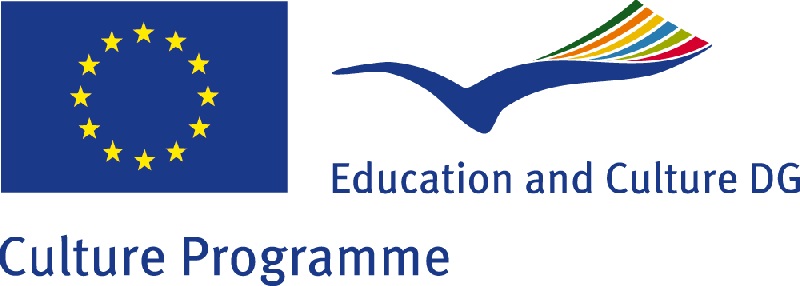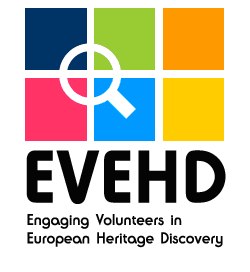
EVEHD – Engaging Volunteers In European Heritage Discovery
EVEHD – ENGAGING VOLUNTEERS IN EUROPEAN HERITAGE DISCOVERY
The EVEHD project is a partnership between 6 European organisations that came together because of common interests in engaging volunteers to undertake a broad range of cultural patrimony research tasks. By engaging volunteers in cultural patrimony research, we seek two complimentary outcomes – empowerment of individuals through connection or re-connection with the local cultural landscape and the discovery of ‘self’; also, a harder edged commercial outcome of volunteers aspiring to develop a career in the cultural and creative sector.
EVEHD addresses the needs of volunteers as a part of communities. Engaging volunteers in cultural discovery has the added benefit of taking people on a pathway to a job, as a guide, etc. and is a concrete way of making best use of cultural assets. Volunteer engagement is no easy task, partly because in some countries volunteering is still in the beginning. All partners in EVEHD are also involved in the cultural & creative (c+c) industry sector and the coordinator, working over the last 15 years in two cases (DE & SK), with 3 core partners have developed methodologies and keys for successful community engagement using the c+c sector as the fuel. Where mathematics and science cannot reach the disadvantaged, cultural heritage, history, archaeology, oral history, re-enactment, reconstruction, visual art, music, dance, craftwork, storytelling, fashion & discovery of the past, can.
Most of all the project is about ‘valuing volunteers’. We are / were inspired by the Grundtvig works on volunteering and the handbook ‘Volunteering in Museums and Cultural heritage – A European Handbook’ (Cristina Da Milano, Kirsten Gibbs and Margherita Sani) and the ‘Manifesto for Volunteering in Europe’.
The EVEHD partnership strongly agrees with the Manifesto regarding the value volunteering as:
- Central to ideals of democracy, inclusion and active citizenship; (relevant to the International year for 2013)
- A powerful tool for positive social and environmental change;
- A source of empowerment for the disenfranchised;
- A source of reconciliation and reconstruction in divided societies;
- A means of lifelong learning.
For the EVEHD partnership we would add that volunteering leads into a career, it gives real experience, builds CV’s and gives confidence for job hunting.
The main activity of EVEHD involves each partner offering a 7 day-long action involving local volunteers, schools, educational institutions, local people and stakeholders (including cultural businesses). The action focuses on a skill of that partner organization and a ‘track record’ of successful work with volunteers. Each host invites staff and volunteers from the other partners/ co-organisers.
EVEHD partnership
Grampus Heritage & Training Ltd, UK – coordinator
Bildungshaus Heideland (BHH), Germany – partner
NAVE, Iceland – partner
Satul verde, Romania – partner
Ipel Eko, Slovakia – partner
Pamukkale University, Turkey – partner
For more information about the project, please visit http://www.grampusheritage.co.uk/projects/evehd/
And the project facebook page https://www.facebook.com/HeritageGrampusEVEHD/?fref=ts
See our articles in the Sublime international magazine:
http://sublimemagazine.com/art-culture/sustaining-traditional-textiles
http://sublimemagazine.com/art-culture/europe-people-and-shared-culture
The latest issue of the Green Village magazine is dedicated to EVEHD. You can find it here:
This is our EVEHD – Best Practice Handbook
EVEHD Romania
The main action of EVEHD Romania took place in the first week of July 2014.The area of our action was Rimeț village, situated in the Apuseni Mountains in Transylvania. Apuseni Mountains is a limestone area with a lot of caves, gorges & ravines.These mountains belong to the bigger chain of the Carpathian Mountains. Rimet village boasts a stunning landscape with wild flower meadows alive with butterflies, insects and birds.
Our action had three main themes:
- spring restauration;
- recording textile patterns from old traditional Romanian costumes;
- making an inventory of thatched houses from the area. This includes photographing, measuring, recording, mapping.
Volunteers from Germany, Island, Slovakia, Turkey and the UK were joined by local people and teenagers from the area. We divided in 3 teams and started to work.
The spring restauration team was lead by Dumitru Ciocan, a Romanian volunteer and Paul Lucas, a volunteer from the UK. Together with the local builder they made a working plan and proceeded to work. The spring was to be restored so that both people and animals can have easy access to fresh water. We attempted to use only stone with no cemment but this proved to be a little difficult, taking into consideration our lack of skills as regards dry stone walling. By the time the action finished, the spring was almost complete.
Another team led by Philip White & Joy Ede from UK recorded thatched buildings from the area. They showed the volunteers how to use the building survey sheet to record building techniques, type of wood, type of building, interior details, dimensions, GPS position. A number of 28 thatched buildings were recorded and the information we collected will be used to make a plan for saving these building and putting them to use as part of the cultural landscape of the Apuseni Mountains.
The third team led by Martin Clark recorded traditional textile patterns onto paper. They had access to the ethnographic collection of the village and recorded textiles from old Romanian costumes. This was done with the purpose of discovering common textile patterns throughtout countries taking part in the project. We found out there are many similarities between Romanian textile patterns and those from Slovakia and some identical patterns to the Turkish ones ( the “baclava” pattern). The textile team set up a fashion shoot to show how traditional textiles can be used in a contemporary way.
During the week there were cultural trips so that participants find out more about the area. We had a day trip to Alba Iulia to visit the Vauban fortress and an afternoon walk to the Rimet monastery.
Another activity of the EVHED project in Romania started in the spring of 2015 and its main theme is oral history. Together wih our volunteers we have been interviewing old people in the village of Gîrbovița to discover how life was in the past. We will continue with this activity in 2016. The interviews will be published in a booklet.
In the autumn of 2015 we started the preparations for a community centre/library in the village of Girbovița. Members of the community and our international partners are involved in setting up this centre.






























 "Satul Verde" Association
"Satul Verde" Association Asociatia Satul Verde
Asociatia Satul Verde